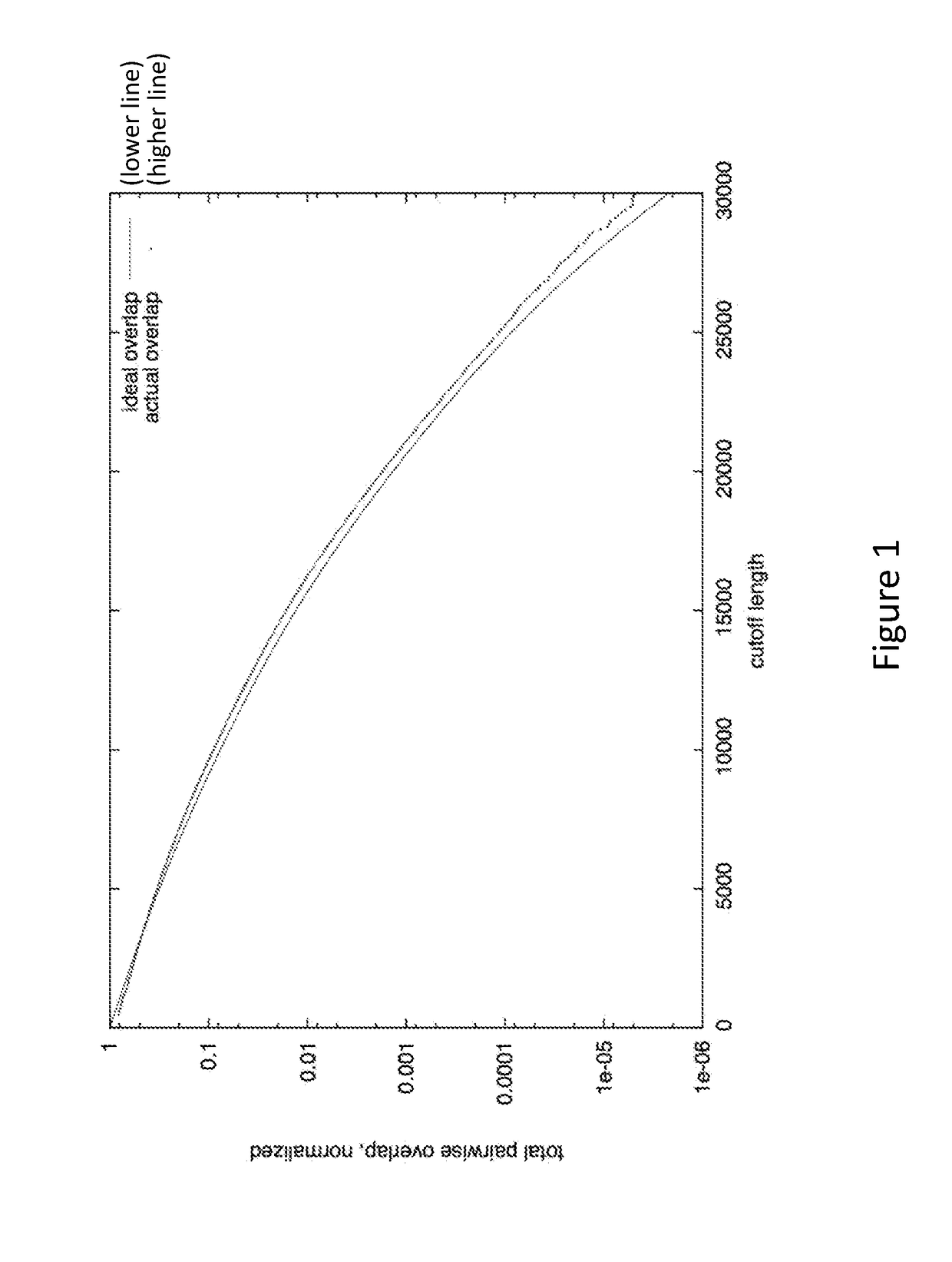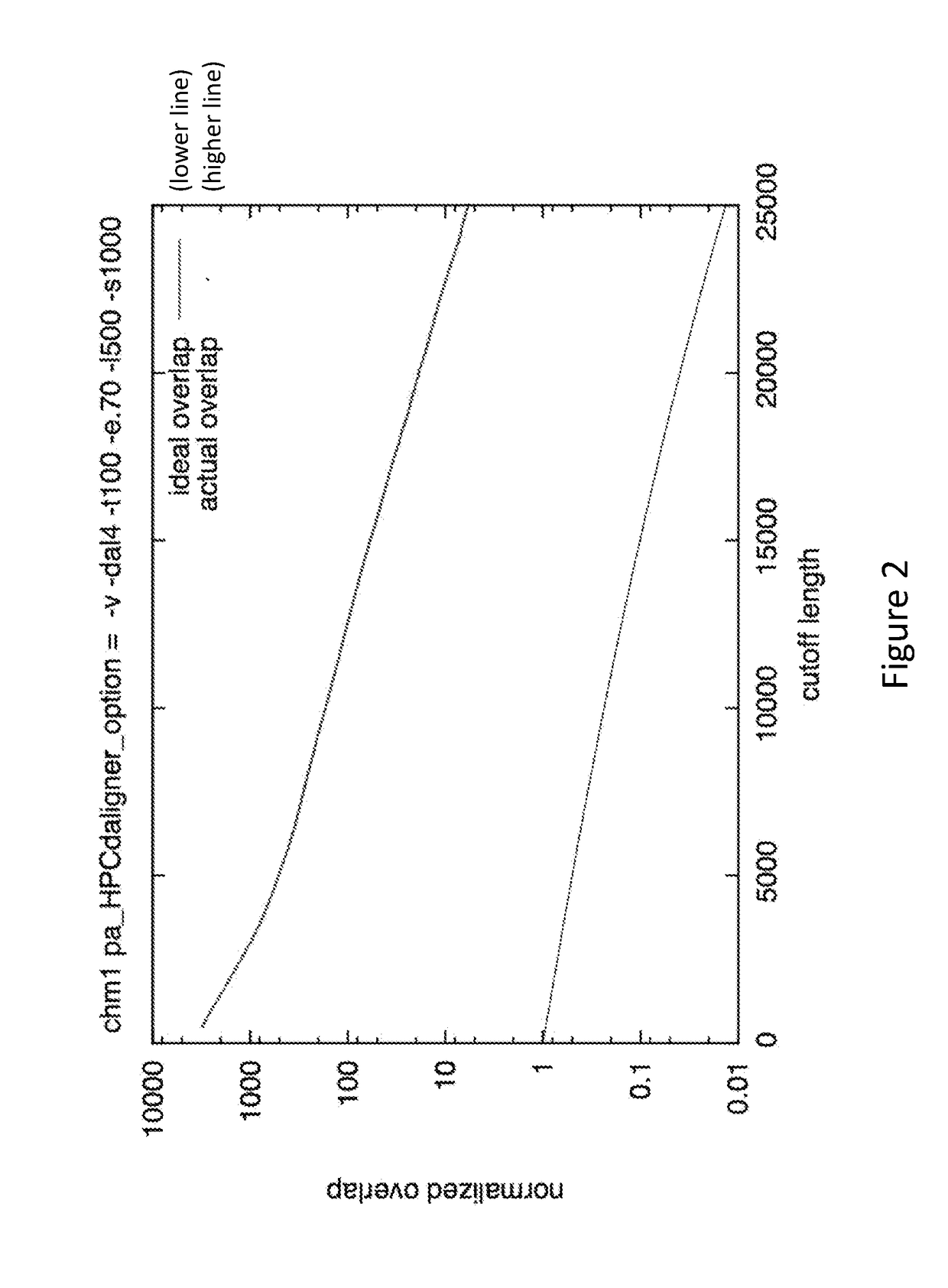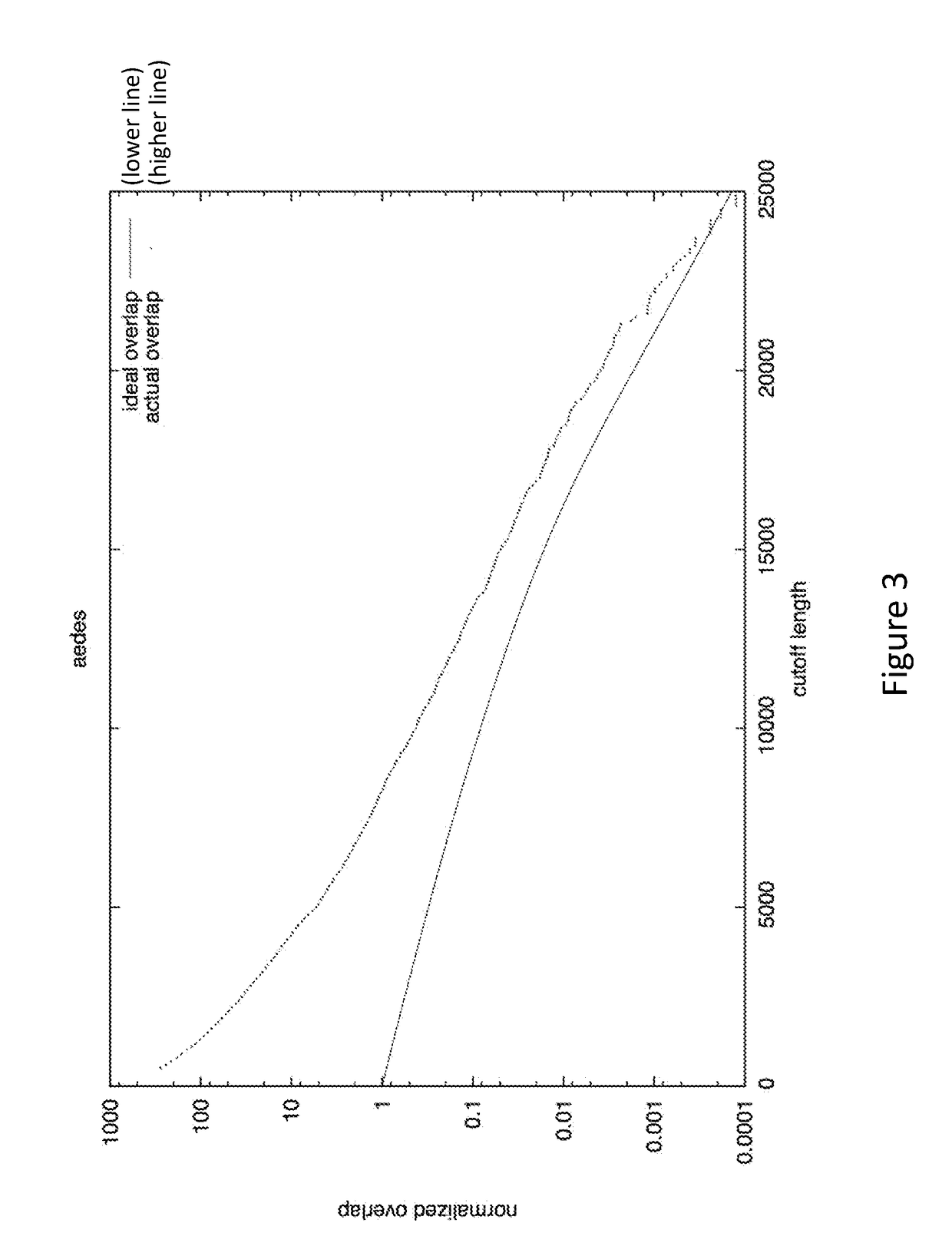Sequence assembly method
- Summary
- Abstract
- Description
- Claims
- Application Information
AI Technical Summary
Benefits of technology
Problems solved by technology
Method used
Image
Examples
Embodiment Construction
I. General
[0020]The methods presented herein are generally applicable to analysis of sequence information, and in particular the assembly of overlapping sequence data into a contig, which can be further analyzed to determine a consensus sequence. While many different type of sequence data can be analyzed using the methods and systems described herein, the invention is especially suitable for analysis of sequences of biomolecular sequences, such as nucleic acids and proteins. Methods for sequencing biomolecules have been known to those of skill in the art for many years, and more advanced techniques that increase throughput, readlength, and accuracy have been developed and commercially introduced. These advances have vastly increased the amounts of sequence data produced, as well as the need for improved sequence analysis techniques.
[0021]The methods described herein are applicable to many different types of sample sequences, e.g., DNA, RNA, protein, etc. In some embodiments, a datas...
PUM
 Login to View More
Login to View More Abstract
Description
Claims
Application Information
 Login to View More
Login to View More - R&D
- Intellectual Property
- Life Sciences
- Materials
- Tech Scout
- Unparalleled Data Quality
- Higher Quality Content
- 60% Fewer Hallucinations
Browse by: Latest US Patents, China's latest patents, Technical Efficacy Thesaurus, Application Domain, Technology Topic, Popular Technical Reports.
© 2025 PatSnap. All rights reserved.Legal|Privacy policy|Modern Slavery Act Transparency Statement|Sitemap|About US| Contact US: help@patsnap.com



